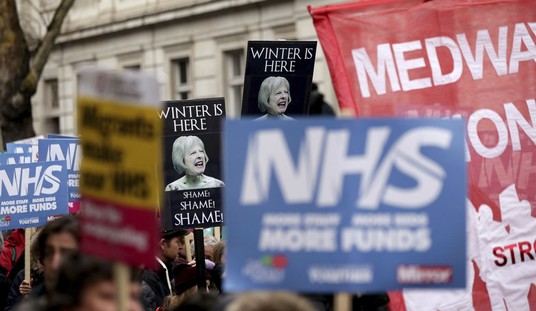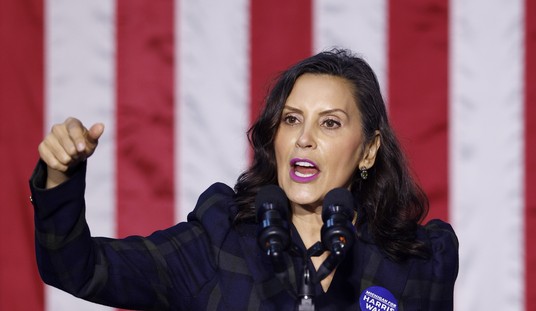It’s been mentioned in policy circles. It was even mentioned as one issue where Democrats and Republicans find common ground during the first Democratic debate. The issue is criminal justice reform, and in many ways; conservatives are leading the way.
On October 7, Sen. Mike Lee (R-UT) delivered a speech at the Heritage Foundation, where he outlined why criminal justice reform is necessary, how this policy discussion defends the best of American conservatism, and how his bill plans to provide the foundation for such reform on the national stage.
“The most successful criminal justice reformers in the twentieth century advocated for conservative goals: law and order built on the responsible use of government’s coercive powers; tight-knit communities; a vibrant civil society; strong, intact families; and personal responsibility,” he said:
It’s about basing our laws, our court procedures, and our prison systems on a clear-eyed understanding of human nature – of man’s predilection toward sin and his capacity for redemption – along with an uncompromising commitment to human dignity.
Respect for the equal dignity of all human life – no matter how small or weak – and for the redemptive capacity of all sinners – no matter how calloused – is the foundation for everything that conservatives stand for. Our approach to policing and punishment should be no different.
So, as I see it, criminal justice reform properly understood represents principled conservatism at its best.
Lee added that 2 million Americans are behind bars, which means one in 28 children have parents that are guests of the government. The vast majority of those in prison are non-violent offenders, and most will be re-released back into society. Upon release, most are bereft of the resources, like housing, which are key in the process of rejoining the ranks of law-abiding citizenry. He also cited that most liberal reforms aim to cut down the rate of incarceration than lowering the crime rate. Yet, he added “as criminal law scholar Stephanos Bibas puts it, ‘just because liberals are wrong does not mean the status quo is right.’” At the same time, we must not forget how we got these high rates of incarceration, which are attributed, in part, to the fact that we had a serious crime problem.
New York City is a perfect example of the impact of this crime wave. People felt unsafe on the streets. In fact, for almost a quarter century, the Big Apple was an absolute nightmare. Prostitution was rampant. Heroin use was out of control. The city’s budgetary problems led to the New York Police Department getting hit with massive layoffs amid a crime wave. By the early 1990s, the city had over 2,000 homicides. But, crimes rates dropped shortly thereafter, and the city has seen their crime rates drop, though there has been an uptick in shootings in months past. Lee quoted Michael Novak, a theologian, who noticed that the criminal element isn’t difficult to understand; it’s a natural occurrence in the human condition:
…[T]he only way to mitigate our innate inclination toward criminal behavior is to protect and promote our most reliable sources of virtue… where all of us, throughout our lives, learn – and when necessary are forced – to be honest, decent, kind, and conscientious.
The most important of these character-forming institutions are: family, faith, work, and community.
The innovative policing and punishment reforms of the 80s and 90s that grew out of Novak’s insight succeeded precisely because they were designed to strengthen – and increase access to – these invaluable networks of trust and opportunity.
There was broken-windows policing – the single most effective crime-reduction policy of the era – that helped rebuild fractured communities from the bottom up.
As it was originally conceived by James Q. Wilson and George Kelling, broken-windows policing was a collaborative project. It called on law-enforcement officers and neighborhood residents to work together to maintain public order – following local standards, not rules imposed from above.
There’s also Chuck Colson, a Nixonite, who was given a seven-month prison sentence for charges stemming from the Watergate scandal, who became a born-again Christian while in jail. Upon his release, he devised an alternative centering on treatment centers and drug courts:
All of which enabled offenders to stay connected to community, family, and work while serving out their sentences.
Studies estimate that nearly three-quarters of inmates were gainfully employed in the month prior to their arrest. And we know that a majority of prisoners are also parents – most of whom lived with their minor children before they were arrested or incarcerated.
Yet the traditional penitentiary approach to punishment severs the offender’s ties to their family and work life.
To make matters worse, prison doesn’t just isolate offenders from networks of trust – it plugs them into networks of distrust.
It takes them from a community of law-abiding citizens, where most people work and have families, to a community of convicted criminals, where idleness is the norm and families are separated not just by walls and barbed wire, but often by hundreds, if not thousands, of miles.
What Lee is trying to strike home is a return to a sense of humanity and dignity when it comes to crime and punishment, which so far has torn apart families, kept the incarcerated from truly becoming rehabilitated, and set in motion a vicious cycle of recidivism that is financially unsustainable. Hence, why he’s putting forward the Sentencing Reform and Corrections Act:
Our bill expands federal judges’ now-limited discretion, so they can treat offenders like human beings, not statistics, and punish them according to their particular circumstances.
It broadens the federal “safety valve” – a provision that allows judges to sentence a limited number of offenders below the mandatory minimum. Contrary to what many critics claim, this doesn’t absolve offenders of their crimes. Nor will it suddenly and indiscriminately release legions of violent predators into our communities.
In fact, under this reform, the status of offenders with serious drug or violent convictions won’t change. They will remain ineligible for federal “safety valve” relief.
Finally, the bill improves the quality of our federal prisons – by increasing access to vocational training, therapeutic counseling, and reentry services – so that we have fewer first-time offenders turning into career criminals.
All of these are commonsense and long-overdue reforms. But make no mistake: we are at the beginning, not the end, of this generation’s story of criminal justice reform.
There is still work to be done if we truly want to rebuild the system according to the principle of human dignity and upon the proven successes of recent reforms at the state level.
Lee closed by reminding all of us how forgiveness plays a part in all of this.
“Forgiving is not the same thing as excusing. And it’s not incompatible with punishment. Forgiveness requires assigning blame and, when necessary, imposing just punishments,” he said.
He added that yes, some crimes are so horrific that the state should do everything it can to prevent that offender form ever being released back into society. Yet, “the reality is that almost every offender who goes to prison will one day get out. We do ourselves a disservice when an offender’s punishment does more to promote criminality than penitence.”
Even activists of this cause on the other side of the political spectrum have noticed conservatives across the country taking the lead on criminal justice reform. Recently, at the progressive Center for American Progress, former NAACP president Ben Jealous said, “[P]rogressives in some ways have been catching up with conservatives who have, in some states, taken a lead.”
This push to reform our justice system has the support of law enforcement, many of whom agree locks up too many people that “don’t belong there” (via NYT):
More than 130 police chiefs, prosecutors and sheriffs — including some of the most prominent law enforcement officials in the country — are adding their clout to the movement to reduce the nation’s incarceration rate.
Asserting that “too many people are behind bars that don’t belong there,” the officials plan to announce on Wednesday that they have formed a group to push for alternatives to arrests, reducing the number of criminal laws and ending mandatory minimum prison sentences. Members of the group are scheduled to meet Thursday with President Obama.
The group includes the police chiefs of the nation’s largest cities, including William J. Bratton of New York, Charlie Beck of Los Angeles and Garry F. McCarthy of Chicago, as well as prosecutors from around the country, including Cyrus R. Vance Jr., the Manhattan district attorney.
The Times added that the cost of maintaining these high rates of incarceration is $80 billion a year.








Join the conversation as a VIP Member